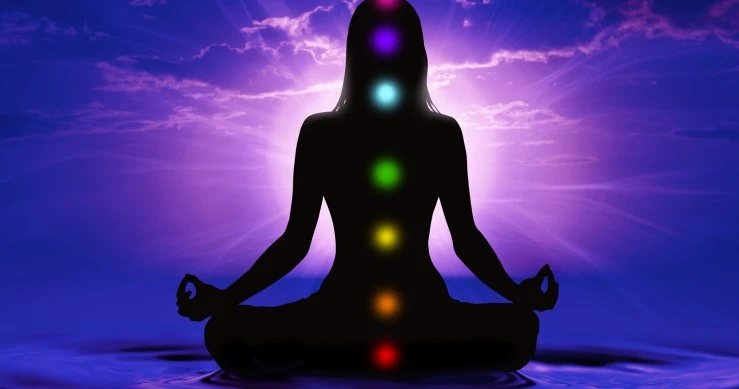What Is Chakra Meditation? A Complete Guide To Help You Understand Better
Imagine meditation as a mental workout when you think about it. There are numerous methods to do it, just like physical exercise. Chakra meditation is a method.
Chakra meditation is a form of meditation that is believed to achieve mindfulness and balance by centering “energy” in the body by focusing on specific chakras.
Chakra meditation practitioners assert that its advantages include reduced stress and a more optimistic outlook on life, which are similar to those of general meditation.
For more information, keep reading.
Table of Contents
What Is Chakra Meditation?
Chakra meditation is a meditation practice that involves imagining certain chakras waking up, activating, or becoming unblocked to achieve a balanced state of “energy” in the body (in this context, the term “energy” is referred to spiritually, not scientifically or medically).
Chakra meditation proponents assert that it can align chakras for an enhanced sense of health and wellness through breathing exercises, meditative yoga poses, and even posture corrections like sitting up straight to lengthen the spine.
Advantages Of Chakra Meditation
Chakra meditation practitioners claim its advantages are similar to those of general meditation and include reduced stress, a positive outlook, improvements to their self-esteem and well-being. However, there is little research on the benefits of chakra meditation that has been proven.
Some people think that these advantages could be the result of a placebo effect from chakra meditation because it’s challenging to gather conclusive data on it. The scientific research on the functioning of the human body has no bearing on chakra meditation. People who engage in chakra meditation frequently do so as a reflection of their spiritual convictions. Chakra meditation can be used to supplement other healthy living practices rather than replacing other scientifically validated ways to improve health.
Techniques For Chakra Meditation
There are a few pointers that have been discovered to be beneficial when practicing chakra meditation, regardless of whether your goal is to find balance, manage stress more effectively, or develop mindfulness.
You can use a similar structure for chakra meditation if you’ve previously practiced it. Place your feet flat on the floor and keep your spine straight as you sit in a comfortable position. Decide which specific chakra you want to concentrate on by doing your research beforehand. Due to the corresponding parts of the body that practitioners believe the heart, brow, and crown chakras are linked to, these three are the ones that receive the most attention during chakra meditation.
Focusing on the chakra you’re trying to open, use a mix of visualization (many believers picture chakras like a lotus flower, opening and closing) and mantra meditation (the phrases “vam” or “yam” are commonly used). The chakra you want to develop or be more mindful of is where you should focus your thoughts and energy. If you find music to be helpful while you meditate, you can use it.
How Do You Perform Chakra Meditation?
Anytime, anywhere, you can meditate on the chakras. Start a regular practice of daily sessions or just use this meditation technique when you’re experiencing life’s impasses.
Find an online guided chakra meditation if you’re not sure where to start. Most sessions include:
- rooting yourself in the present moment
- closing your eyes
- breathing deeply
- actively noticing your thoughts, feelings, and physical sensations
Your chakra meditation can be guided by identifying any imbalance beforehand. Flip-flopping in the stomach from stress? Ensure that your solar plexus chakra is unblocked. Having trouble communicating effectively at work? Ponder your throat chakra. See more about What Is Walking Meditation?
Can I Do A 15-minute Chakra Meditation?
For sure!
Get comfortable in a seated position to start. Before mentally checking your body for pain or blocked energy, take a few deep, cleansing breaths.
Once you’ve decided on a session direction (balancing all chakras? unblocking one or two?), the real meditation begins. To be honest, there is no set procedure here. The majority of people practice various mental exercises, including chakra color visualization.
Need some assistance exploring the mystic magic of chakra meditation? Check out these sessions:
- 7 Chakra Meditations to Keep You in Balance (self-paced)
- Guided Chakra Affirmation Meditation (10 minutes)
- Ultimate All Chakra Tuning, Balancing (15 minutes)

Perhaps A 30-minute Chakra Meditation Would Be Helpful
You can delve deeper during a longer chakra meditation session. Your 30-minute chakra meditation may also be the ideal length of time to focus on tuning *all* the chakras as opposed to just one while unblocking another.
No matter how long you meditate for, the specifics of your practice won’t change. To visualize, you’ll close your eyes, sit comfortably, and breathe deeply.
Here are some 30-minute chakra meditations to try:
- 7 Chakra Meditations to Keep You in Balance (self-paced)
- Aura Cleansing Meditation (unblock all 7 chakras in 30 minutes)
- 30-Minute Guided Well-being Meditation
How Does Chakra Meditation Relate To Mindfulness?
Like chakra meditation, the ultimate goal of mindfulness is to create a solid foundation for not only the short-term benefits of better health and reduced stress, but also for personal transformation. Similar to chakra meditation, mindfulness demands concentration and a delicate balancing act between resolve and relaxation.
Contrary to chakra meditation, mindfulness does not call for any specific beliefs other than a belief in the potential advantages of the practice. Being mindful is more about accepting the present moment as it is and developing the ability to stay anchored in it. People who engage in mindfulness meditation frequently discover that they are more alert, centered, and receptive to others outside of their practice sessions.
The Mindworks Meditation Courses provide an in-depth overview of these techniques and the underlying philosophy so that you can learn more about mindfulness, awareness meditation, and the destination of the mindful journey.
If you’ve read this far, you must be curious about the benefits of meditation, including the feeling of lasting happiness and wellbeing. You’re in the right spot.
Sincere meditation practices cultivate our innate capacity for joy and awareness. For practice to be successful, instructions must be precise and progressive. You can take advantage of all the benefits of a regular meditation practice thanks to Mindworks’ 9-level Journey to Well-Being and other motivational courses.
What Are Chakras?
The word “chakra” comes from Sanskrit and translates to “wheel” or “disk,” referring to the shape of these whirling energy centers that unite mind, body and spirit. “Everyone has seven main centers of energy, also known as chakras, throughout the body, beginning at the top of the head and going straight down to the bottom of your spine,” spa director Sharla Martin provides us with information. And every single one of these energy hubs serves a particular purpose.
The Seven Chakras: What Are They?
According to Yoga International, the locations and functions of each chakra are listed below.
Crown Chakra (sahasrara)
This chakra, which is found at the crown of the head, supports more enlightened functioning, the development of self-mastery, and a sense of unity with all.
Third Eye Chakra (ajna)
This chakra, which can be found on the forehead between your eyes, has the energetic purpose of assisting us in becoming more aware of our emotional, mental, and spiritual selves.
Throat Chakra (vishuddha)
Located at the base of your throat, this chakra’s energetic function is to help us find authentic self-expression
Heart Chakra (anahata)
This chakra, which can be found in the middle of your chest, has the energetic purpose of assisting us in accessing unrestricted love.
Solar Plexus Chakra (manipura)
This chakra, which is situated at the belly button, gives us the assurance we need to process and get rid of what does not serve us, and then to let it go.
Sacral Chakra (svadhisthana)
This chakra, which is situated at your pelvis, has the energetic purpose of assisting us in controlling our emotions and desires so that we are not controlled by them.
Root Chakra (muladhara)
This chakra, which can be found at the base of the spine, aids in keeping us rooted and stable inside.
The Importance Of Chakras
“Chakras process and distribute energy that is needed for our health, well-being and vitality,” healing practitioner Jissel Ravelo explains for Vibra Wellness. And according to yoga tradition, when your chakras are open, energy flows easily throughout your body. In contrast, internal energy accumulates when your chakras are blocked, which throws off the balance between your mind, body, and spirit.
Conclusion
The body’s energy centers are called chakras. The major exits—important organs or nerve bundles—along your energy highway, which runs the length of your spine, are marked by chakras.
Like general meditation, chakra meditation focuses on balancing or healing the chakras, which are your body’s energy centers. Chakra meditation may help you reduce stress and improve your sleep.
Regarding your reading, I thank you.





